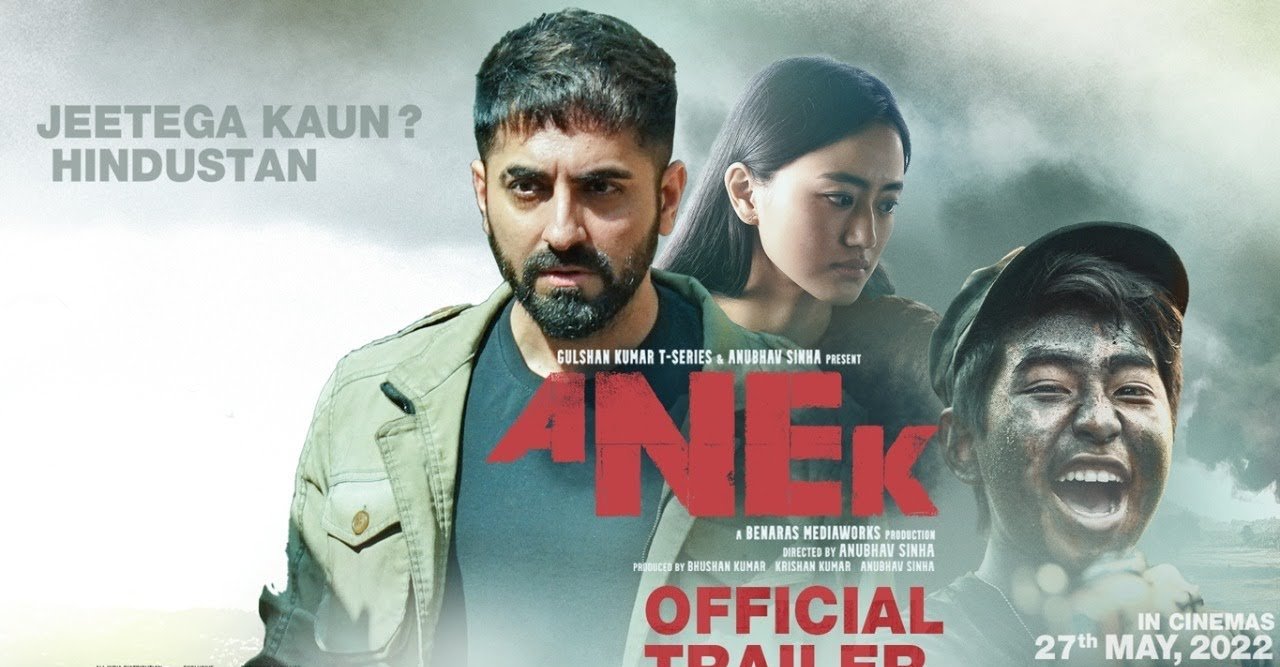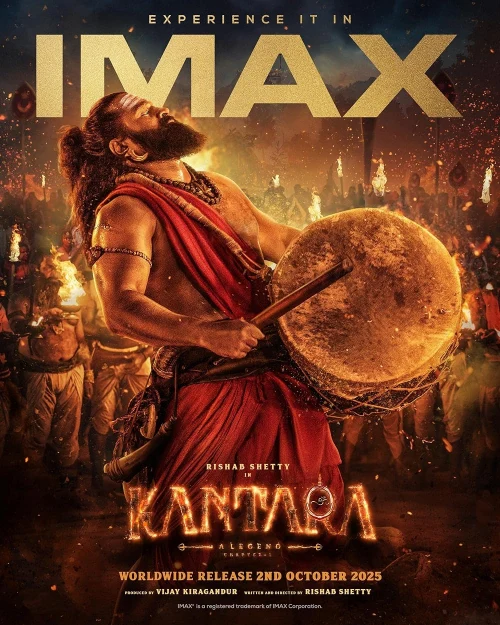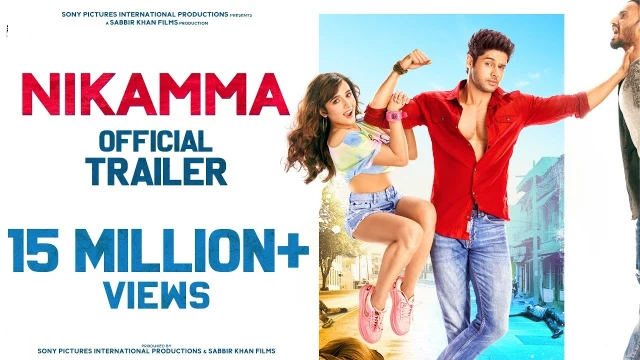Anek Movie: A Bold Voice from the Northeast That India Needed to Hear

Story and Plot Summary – anek movie
Set against the politically charged backdrop of Northeast India, the film follows an undercover officer named Joshua. He receives a secret mission from India’s intelligence agencies to start peace talks between the government and rebel groups in the area. As Joshua delves deeper into his assignment, he begins to grasp the complex issues of identity, nationalism, and human struggle that define the region.
The story weaves through various characters, each showing different aspects of patriotism and conflict. Aido is a determined boxer with dreams that reach beyond borders, while her father Wangnao, with his revolutionary background, challenges Joshua’s beliefs. Through these characters, the film explores what it truly means to belong to a nation.
The plot balances personal conflicts with wider political themes. Without revealing too much, the film’s climax is both introspective and socially aware. It focuses on emotional and ideological payoff rather than shock. The narrative is more thought-provoking than action-driven. This film doesn’t just aim to entertain; it seeks to engage and inform viewers about a side of India that is often overlooked in cinema.
Cast and Characters – anek movie
The cast features a strong ensemble, with each actor deeply connected to their roles. Leading the film is Ayushmann Khurrana, who plays Joshua with subtle depth. He depicts a government agent torn between duty and moral awakening. His quiet expressions and moments of silence convey as much as his dialogue. This is one of his more restrained yet impactful performances.
Andrea Kevichüsa plays Aido, a strong young woman and national-level boxer from the Northeast. Her performance is authentic, grounded, and raw. Aido represents resilience and a personal fight for recognition, and Andrea’s debut is confident and impressive. She brings a freshness that is rarely seen in mainstream films.
Deeplina Deka and Manoj Pahwa add significant depth to the cast. Manoj, as Joshua’s handler, has limited screen time but makes a strong impact. Kumud Mishra, playing a government official, creates a character full of ambiguity and quiet threat.
What stands out in the casting is the film’s dedication to representation. It avoids using cliché actors for Northeastern roles and instead features genuine talent from the region. This adds authenticity and emotional resonance. Every character serves a purpose, with their stories deeply connected to the social issues the film aims to address.
Music and Soundtrack – anek movie
The soundtrack is minimalist yet meaningful. It complements the narrative without overpowering it, enhancing the film’s emotional depth. Composer Mangesh Dhakde combines subtle percussion with folk-inspired instrumentals to create a haunting atmosphere. The music underscores the quiet tension in the story.
One standout track is “Jab Tak Hai,” a melancholic piece that captures the characters’ inner struggles. It features soft strings and echo effects, creating a lingering reflective mood. The use of native musical elements from the Northeast adds regional flavor and authenticity, avoiding clichés.
Lyrics by Anurag Saikia and Shakeel Azmi blend introspective thoughts with poetic insights on identity, justice, and silence. The songs appear infrequently but are impactful. In fact, the silences in the film are often more musical than the soundtrack itself.
Critics have praised the music for its restraint and relevance. It’s not a commercial soundtrack; it has been crafted to enhance the visual storytelling. It reflects the film’s tone—thoughtful, slow-burning, and impactful. For audiences looking for deeper soundscapes that align with the narrative, this soundtrack is a quiet gem.
Performances and Acting Reviews – anek movie
Ayushmann Khurrana’s performance is the film’s backbone. Known for tackling socially relevant roles, he tones down his charm here, diving into a more introspective character. His portrayal of Joshua feels personal, particularly in scenes where the camera focuses on his face as he grapples with conflict. He communicates more through his eyes than his words.
Andrea Kevichüsa delivers one of the strongest debut performances in recent years. As Aido, she effortlessly balances vulnerability and strength. Her journey as a boxer and daughter is emotionally charged. She holds her own against the star power without being overshadowed.
Kumud Mishra and Manoj Pahwa, both experienced actors, provide solid support. Mishra’s character has a calm exterior that hides complex motivations, and his interactions with Ayushmann are subtly confrontational. Pahwa, despite being in a smaller role, brings authenticity to a morally complex character.
The ensemble cast works well together. There’s no overacting or melodrama. The dialogues are delivered with conviction and realism. The direction allows each actor the space to breathe in their scenes. Critics particularly appreciate the understated nature of the performances—every gesture and pause adds to the emotional weight of the story.
Dialogues and Writing Style – anek movie
The writing in the film is sharp, simple, and intentional. It avoids excessive explanation, allowing viewers to piece together the story. Dialogues feel natural and often leave things unspoken, letting silence and facial expressions carry weight. This creates a poetic quality in the writing.
Writers Anubhav Sinha, Sima Agarwal, and Yash Keswani deeply layer the script. The screenplay avoids monologues or catchphrases and instead reflects real-life conversations, particularly about nationalism and identity, which are thoughtful and layered.
Lines like “Shanti sirf ek shabd nahi hai, ek ladai hai” deliver meaning without being heavy-handed. The writing addresses political conflict without sounding preachy. It pushes viewers to think about what peace means and who defines it.
A unique aspect of the writing is its focus on regional authenticity. Characters use phrases from local dialects, and subtitles are used sparingly. This enhances the film’s immersive quality. It’s not a fast-paced thriller but a slow, intense script that builds through emotion and ideology. The writing is a crucial element of its overall impact.
Release and Promotion Strategy – anek movie
The film had a carefully planned release that reflected its political tone. The launch focused on social themes and national unity. Instead of typical mass-market promotion, the creators chose a more thoughtful approach. Posters highlighted impactful quotes and serious expressions, indicating that this was a socially aware project.
Ayushmann Khurrana used his platform to discuss the Northeast region and its significance in national conversations. Prior to the release, the team participated in interviews, college panels, and social media discussions. They also connected with local influencers and activists from Northeast India to spark genuine conversations.
The trailer featured subtle music, edgy visuals, and themes of identity and belonging. It clearly indicated that the film wasn’t a conventional entertainer; it was a reflective political drama. The marketing strategy emphasized words like “peace,” “dialogue,” and “unity,” generating curiosity without revealing much of the plot.
Notably, the promotions avoided romanticizing or glorifying the region, approaching it instead with respect and understanding. The film was released in theaters across India on May 27, 2022. Despite limited mainstream media buzz, it resonated with critics and socially conscious viewers who connected with its message.

7. Box Office and OTT Streaming Performance – anek Movie
the film had a modest box office experience. Released on May 27, 2022, it faced strong competition from popular films and franchises. The collections on the first day were disappointing, with reports estimating figures below ₹2 crore. Despite its relevant theme and solid performances, the film struggled to reach wider audiences.Its total domestic collection remained low, finishing around ₹8 to ₹9 crore. The limited marketing and serious subject matter restricted its appeal to urban and niche audiences.
Single-screen theaters
particularly saw poor attendance. However, positive word-of-mouth from critics and commentators helped the film gain traction online.The OTT release sparked renewed interest. When it premiered on Netflix, the film quickly entered the “Top 10” across various regions. It attracted viewers who appreciate slow-burn, content-driven cinema.
The availability of subtitles also helped it reach non-Hindi speakers.Streaming data, though unofficial, suggests that the film attracted a much larger digital audience than in theaters. International viewership, especially in countries with a strong South Asian community, added to its value. While it did not perform well at the box office, the film found its place in the OTT space and in educational discussions, serving more as a conversation starter than a commercial hit.8. Critical and Public Reception – anek movieCritics appreciated the film’s intention but had mixed opinions about its execution. Leading publications commended its bravery in tackling a complex issue rarely seen in mainstream cinema.
Ayushmann Khurrana’s measured performance and Andrea Kevichüsa’s debut received high praise.Reviewers pointed out the film’s commitment to realism and representation. However, some felt the screenplay was too dense or uneven in pacing. The narrative style, while intriguing, was viewed as slow and non-linear, causing a divide in audience opinion. A few critics mentioned that the film could have been more emotionally engaging and had tighter storytelling.
Public response
was similarly mixed. Urban audiences and film lovers who appreciate political commentary found it powerful and enlightening. In contrast, casual moviegoers looking for entertainment found it heavy. Social media buzzed with praise from voices in the Northeast who felt represented.Rotten Tomatoes and IMDb scores hovered around average, but discussions on forums were more detailed than normal. The film inspired YouTube essays, Instagram reels, and articles focused on regional identity. While it wasn’t universally adored, it was widely respected for its intent and message.In summary, the reception was intellectually supportive but emotionally divided—yet culturally significant.
9. Cultural Impact and Public Response – anek movie
The film occupies a special place in recent Indian cinema due to its focus on Northeast India, an area often overlooked in popular stories. It sparked essential conversations about inclusion, identity, and what being “Indian” means in a diverse society. Unlike films providing token representation, this one gave its Northeastern characters depth and agency.After its release, many activists and educators used the film in seminars and cultural studies discussions. Schools and universities held screenings followed by Q&A sessions focused on internal marginalization. The lead actress, Andrea Kevichüsa, became a new figure for visibility from the region, praised for representing a long-ignored demographic.
The film also gained traction on social media, especially in the North-East, with users sharing personal experiences of alienation and patriotism. Hashtags like #VoicesFromTheEast gained popularity, and influencers helped keep the message alive. News outlets began to highlight this cultural shift, fostering discussions about inclusion.It even motivated some regional filmmakers and producers to support stories from India’s Northeastern region. Though it didn’t lead to mass change, it started a ripple effect. The film’s cultural legacy may outlast its box office performance, making it an important part of India’s cinematic journey.
10. Comparisons with Similar Movies – anek movie
Compared to other political dramas, this film stands out for its emphasis on the Northeast. While films like Haider, Article 15, and Raazi explored themes of conflict, oppression, and patriotism, this one addresses those issues from a region often left out of mainstream narratives.
Article 15
, also directed by Anubhav Sinha, shares a thematic connection in confronting systemic injustice. However, while that film focused on caste discrimination in northern India, this one examines ethnic identity and national belonging in the East. Both films are intense, slow-paced, and rich in ideology, but this one delves deeper into complex areas without providing simple answers.In tone, it resembles Haider by Vishal Bhardwaj. Both explore unrest and internal conflict. However, this film presents its story more subtly. The protagonist doesn’t get swept up in drama but faces uncomfortable truths quietly.Unlike traditional patriotic dramas like Uri or Border, this story raises questions about who defines patriotism. It avoids a hero versus villain dynamic. Instead, it explores internal dilemmas of peace and dignity.In a landscape filled with loud nationalism, the film opts for silence, empathy, and conflict resolution—making it a bold outlier among similar titles.
11. Awards and Recognitions
Although it didn’t sweep major awards, the film received recognition for its message and performances. Andrea Kevichüsa was acknowledged as one of the year’s most promising newcomers. She earned nominations for Best Debut at several awards, including Filmfare and Zee Cine Awards.Ayushmann Khurrana was celebrated for taking on a role so deeply rooted in complexity, especially in a film that didn’t offer commercial gains. While he didn’t win major awards for this performance, he often appeared in critic shortlists and articles emphasizing bold role choices
.The film also received special recognition at independent and regional award events focused on social justice in cinema. NGOs and advocacy groups invited the makers to discussions and film festivals, where the project was honored for “Cinematic Activism” and “Diverse Representation.”Despite limited mainstream accolades, the film became a regular mention in lists of thought-provoking films. Academic institutions included it in studies related to Indian politics, media representation, and diversity.Its award journey reflects its content—quiet, dignified, and committed to making a statement. The recognition might not come in golden trophies, but in the serious cultural and academic discussions it continues to inspire long after its release
12. Conclusion and Final Thoughts
This film may not appeal to everyone—but it is for anyone who appreciates truth, inclusion, and deeper meaning in cinema. It doesn’t aim to entertain through action or glamour. Instead, it invites viewers to reflect on who we are as a nation and what true unity means.With layered storytelling, powerful performances, and dedicated direction, the film effectively raises questions that many films avoid. It boldly centers its narrative in a region often marginalized, giving voice to a part of India that deserves recognition.
Ayushmann Khurrana’s courage in choosing such a role deserves acknowledgment. Andrea Kevichüsa’s emergence signifies new voices in Indian cinema. Anubhav Sinha continues to challenge norms, producing cinema that matters.This isn’t a perfect film. It has its narrative issues and pacing flaws. However, its imperfections contribute to its authenticity. It’s a film that prioritizes conscience over profit and conversation over conclusions.For those seeking cinema that informs and engages, this film leaves a lasting impression. Not through noise, but through the quiet strength of truth.

visit now our other review ⚠️🚨⚠️ Jayeshbhai Jordaar Movie Review: A Bold Satire Wrapped in Humor




One thought on “Anek Movie :A Bold Voice from the Northeast That India”